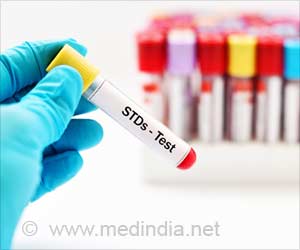Teenage birthrate in US has dropped to a 65-year low.
According to a report released recently by the Centers for Disease Control and Prevention’s National Center for Health Statistics, the birth rate for teenagers declined 2 percent in 2005, falling to 40.4 births per 1,000 women aged 15-19 years, a 35-percent drop compared with the most recent peak in 1991 (61.8), and the lowest ever recorded in the 65 years for which a consistent series of rates is available.But who should take the credit for this welcome trend? Those who are for comprehensive education or those who believe abstinence is the only way out.
Monica Rodriguez, vice president of education and training at the Sexuality Information and Education Council of the United States, says that the birth rate is down mostly because of an increase in the consistent use of improved hormonal birth control methods, like the pill, the patch, the shot and the implant.
Her claims are supported by the widely read report released in late 2006 that found that 86 percent of the decline in pregnancy risk can be attributed to improved contraceptive use and that 14 percent of the decline can be attributed to teens waiting longer to start having sex.
Albert offers another piece in the puzzle. HIV prevention education may finally be "catching up." It's common, he says, for public health information to take a long time -- even decades -- to actually effect the way people behave.
Here's another great thing: Black teens aged 15 to 17 experienced the steepest reduction in teen births. Some people surmise that the decrease is simply because the group with the highest rate will also have the greatest decline.
Advertisement
But Libby Gray Macke who runs the wide-reaching abstinence program Project Reality believes that HIV-prevention education might actually be behind the spike in teen pregnancy close to two decades ago. At the time, Macke says, kids were given a green light on sex -- as long as condoms were used. That message, she claims, simply did not prevent teen pregnancy.
Advertisement
No sex until you swap vows. No genital touching. No mutual masturbation. Even kissing can quickly escalate into below the neckline activity.
Holding out for a ring may seem like a ludicrous campaign in a society where as high as 95 percent of the population has sex before marriage. But Macke stresses that it is the only guarantee against unwanted pregnancy and STDs.
But what about gays and lesbians who may never get to marry? How are they to protect themselves if crucial information is to be withheld from them, ask others.
"We need to be very clear with the message of protection, whether young people use it today or in the future," Rodriguez says. "Condoms aren't perfect, but they are way more effective than not using a condom at all."
"We don't advocate for contraceptives," rebuts Macke and adds rather primly, "It is important teenagers receive pure message."
The federal government has been supporting abstinence-only programming since the Reagan administration. But in 1996, the amount of support took a big leap. Through the Title V Welfare Reform Act, the U.S. Department of Health and Human Services now grants abstinence-only funds to the states, which then distribute the money.
The opponents' most vocal complaint against federal funding is that there is no substantial, scientific evidence that abstinence-only education is making teens safer.
Besides many Crisis Pregnancy Centers (CPC) that receive huge funds turn out to be dangerous conduits of false and fear-based information and a religious message.
The United States has the highest rate of teen pregnancy in the western industrialized world. Whatever is working -- abstinence education, comprehensive education, integrated education -- we need more of it.
A couple of months ago the National Campaign to End Teen Pregnancy noted, “Although there has been a 14% decline between 1991 and 2005 in the proportion of high school students who have had sexual intercourse (CDC Youth Risk Behavior Survey), and the teen pregnancy and birth rates have declined by one-third since the early 1990s, the United States still has the highest rate of teen pregnancy in the industrialized world, and 3 in 0 teen girls get pregnant at least once before their 20th birthday. And there is some evidence to suggest that the remarkable progress the nation has made in this area is slowing. All such data and trends suggest that if the nation is to make further progress in delaying sexual activity and preventing early pregnancy and parenthood, our collective efforts will need to be more creative, more intense, and more targeted.
According to Bill Albert, deputy director of campaign, says "The short answer is quite simple: both less sex and more contraception."
"Researchers disagree about the relative contribution of each to the overall declines in teen pregnancy, but all agree that it is some combination of less sexual activity and greater contraceptive use."
Source-Medindia
GPL/M





